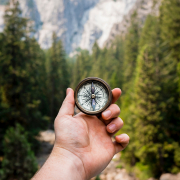Taping The Deficit, Not The Diagnosis
Many clinicians suffer from taping fatigue (not to be confused with tape fatigue where rigid tapes
in particular lose their effect after relatively short periods of loading). The meteoric rise of Kinesio
Tape following the Beijing Olympics followed by a plethora of generic copies and seemingly
endless taping courses combined with a lack of support in the research has lead to a justified
apathy and even dismissal of taping altogether.
I get that. Dynamic Tape Global and the Biomechanical Taping ™ approach that underpins it pre-dates
the 2008 Olympics by several years, with our work to address load and movement through foam
or fabric based products commencing in earnest in 2004, the idea ruminating for a decade prior
to this. Our original foam PosturePals appeared on the New Inventors on ABC TV in Australia in
2008 winning the episode with both the judges and the people’s choice, and with support of
leading clinicians and mentors gave us the encouragement we needed to launch Dynamic Tape Global in
its roll form.
Despite, the aims, applications, properties and effects of Dynamic Tape Global being completely different
to a kinesiology tape, timing and taping fatigue sees it tarred with the same brush so I feel the
effects more keenly and in fact personally. Clearly, the mechanisms and kinesiotaping philosophy
are somewhat dubious and have been brought into question in the research – lifting skin, taping
from one end or the other and so on all shown to make no difference and this should set our open
minded scepticism alarm bells jingling. But why does it seem that all taping has been thrown in
the same basket? I think that the taping education has a large part to play.
In many cases the education that has accompanied kinesiology taping products has sought
primarily to advance sales rather than advance clinical practice. In fact, it has gone a long way to
doing the opposite. Done well, clinical practice is not easy. It is an exercise in problem solving,
often complex and involves thorough history taking, clear identification of what to assess, how to
do it, how to interpret it, how to integrate the findings across a range of systems from
pathophysiology to pain physiology to biomechanics, function, performance and patient goals,
and then come up with an approach to address the various influencers.
Telling people that it is hard is not conducive to tape sales. Dumbing things down so that anyone
can tape themselves is a far easier marketing sell. And this is what we have seen. Taping
education has been based on a diagnosis and generally ones familiar to the general public. For
plantar fasciitis, put a strip this way and a strip that way. All fixed. For tennis elbow, run a piece up
this way, but make sure that you go from this end to that end otherwise it won’t work – enough
science and rules to sound like it must be doing something but in reality an elastic sock might be
just as effective on your plantar fascia.
Effective taping should be based on identified deficits and not a diagnosis. Our educational
pathway does not simply teach people to tape. It guides people through a comprehensive clinical
reasoning process helping them to identify or exclude various factors giving due consideration to
structural integrity, the influence of load and movement control on structure, function, pain and
performance, pain mechanisms and peripheral, central and psychosocial influencers. Dynamic
Tape when applied correctly can introduce 15kg or more equivalent of force into the kinetic chain.
When clinicians have a clear aim of what they are trying to achieve with tape, the technique
follows.
Importantly, we must identify a deficit and its cause. We must understand its relationship with the
movement we are observing, how this influences load and structural integrity, and how this in turn
might have an impact on pain, movement and function. We must understand how applying a force
(tape) externally can address the observed deficit and we must know how to apply a tape
correctly to get a genuine force into the system. It is not possible for everything. We must then
understand the mechanism or mechanisms by which the tape can have its effect. How do we
then re-evaluate, firstly to determine that we did in fact create a genuine force but secondly to
determine if this force addressed the deficit and how that impacted the underlying condition, it’s
signs and symptoms. We may have been wrong. We might have created a large force, modified
movement and load but it has not affected the functional outcomes or pain because it was not
relevant in the first place or the magnitude of change may need to be greater. How do we
determine the difference?
We do not simply tape a label or even tape a movement based on the movement alone without a
deeper understanding of why that is occurring. To illustrate the point I refer you to the case study
using DorsaVi that can be found on our research page.
This participant performed a hopping and landing task and showed an increase in the velocity and
magnitude of frontal plane movement at the hip. Many patients will show an inability to prevent or
efficiently decelerate motion often collapsing into hip adduction and internal rotation giving rise to
dynamic valgus at the knee. These movements have been associated with for example increased
loading on the ACL and increased compression over gluteal tendons at the greater trochanteric
region, compression adding to increased tensile load and poorer force generation capacity being
key factors in the development of tendinopathy.
Many people at this stage would suggest that we tape the hip to resist and decelerate into hip
adduction and internal rotation and the papers by Robinson et al and Bittencourt et al
have both shown that this can be effective in different patient populations. However,
identifying the deficit and addressing it is likely to yield better results.
The person in the aforementioned case study had long standing L3/4 nerve root compression with
quads weakness. His inability to dissipate load and control inner range of knee extension in the
sagittal plane (power plane) resulted in a compensatory load absorption movement at the hip
resulting in increased speed and magnitude of frontal plane motion. Taping the hip provided a
large deceleration of hip movement however as it had not addressed the ability to control the
knee, the magnitude was largely unaltered. The extra movement was still required to attenuate the
loads. Taping the knee to resist the collapse into flexion under the weight of the body (addressing
the deficit) resulted in reduction in both magnitude and velocity of the frontal plane movement at
the hip. Taping a movement is a step forward from taping based on a name alone, but taping the
deficit is likely to provide better outcomes particularly as the problems become more complex.





